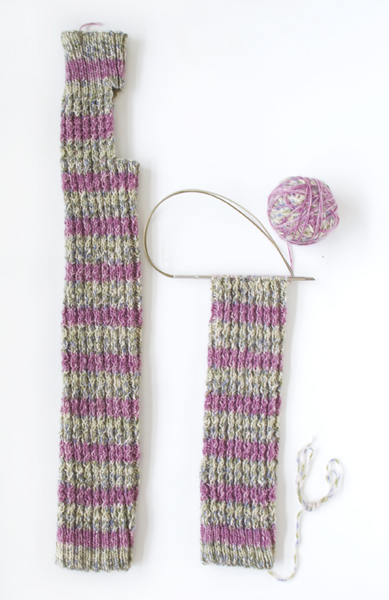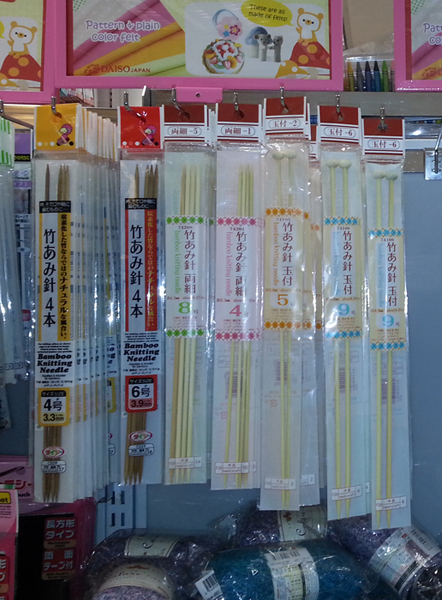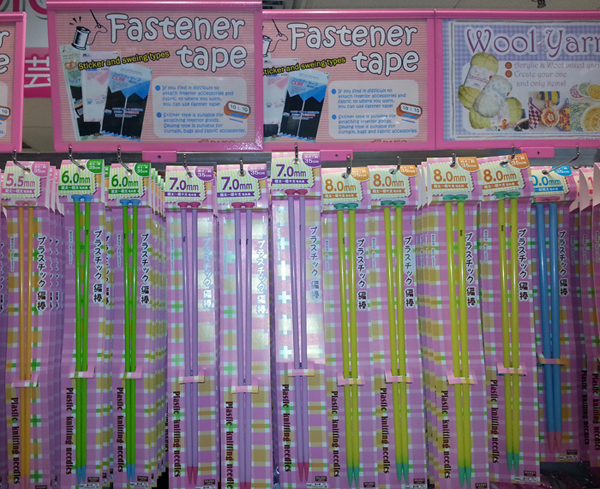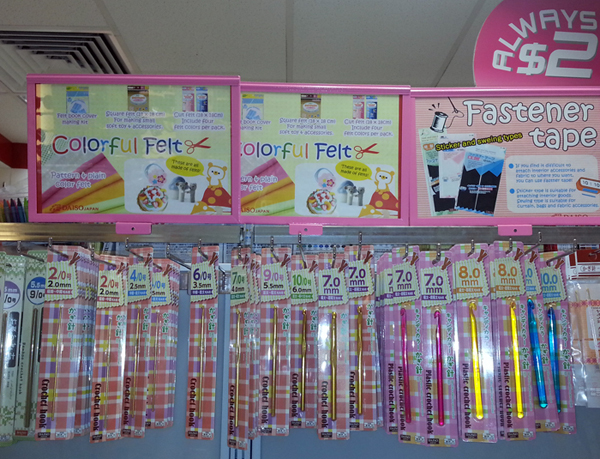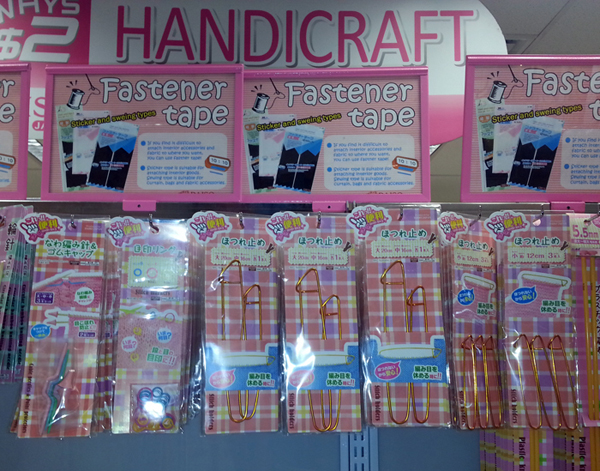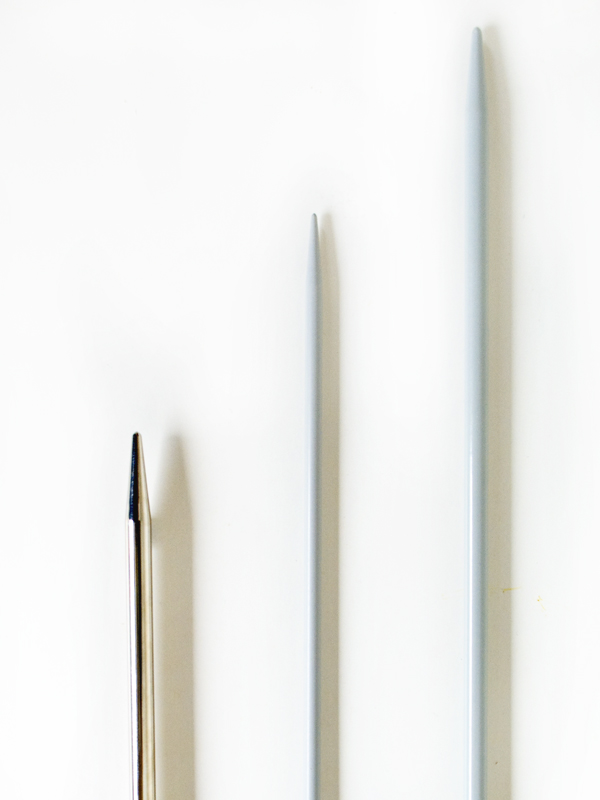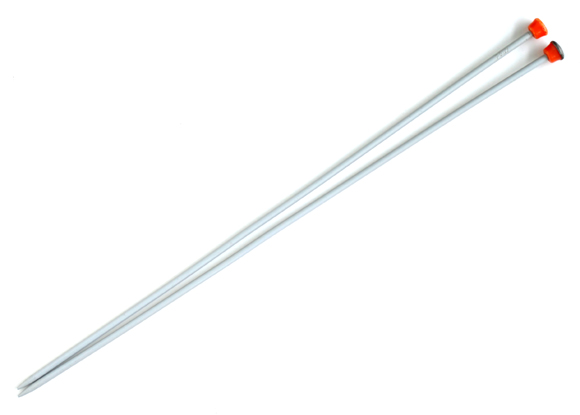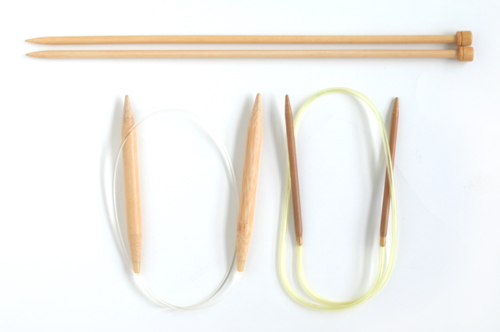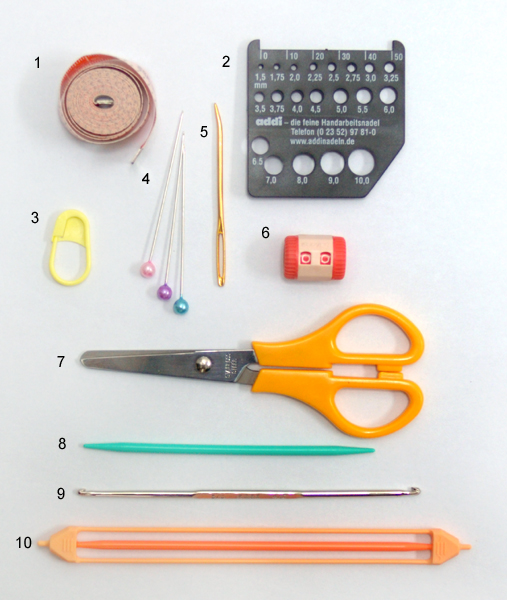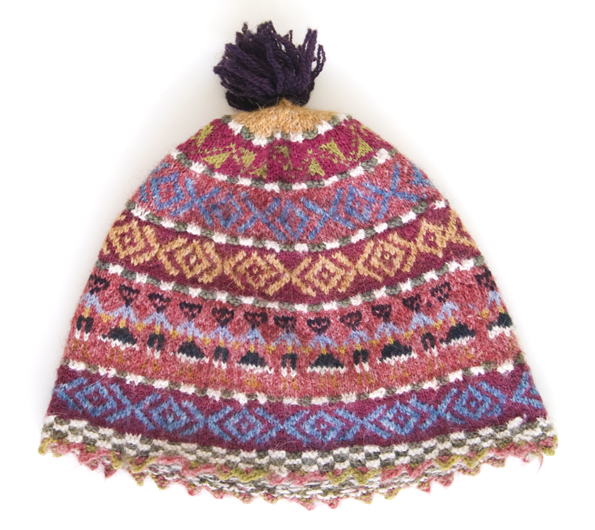A friend saw the original gray pair of stirrup socks and remarked how nice they were. And so I am now making another pair of stirrup socks for her. When I have completed this I will be knitting a vest for another friend. Recently I find that I am knitting things for people I know, though I have been not been disinclined to knit things as gifts as I find that a lot people do not seem to understand the amount of work and design that goes into making something. I especially will not make something for someone who is of the the opinion “just go and buy it”. I do not expect eternal gratitude or a thank you card, just as long as they use it and like it. Do you make things for friends and family or just for yourself?
As I have already completed a pair previously, this pair is taking a very long time to complete. Once I complete the first piece of the project, the knitting slows down because it has all become routine! I have the gauge and pattern figured out, the excitement is gone and it become something I have to complete. I usually complete most of my projects, but it may take some time because I am no longer furiously inspired and want to see what happens next. This I call the Leonardo Da Vinci Syndrome. You know, once I have the project figured out in my head or on paper, the project is done, but still incomplete and I want to move on to something new. An incomplete project is just an incomplete project and cannot be used. So I try my hardest to complete projects. To inspire myself to finish my projects sooner, I browse through knitting magazines that I have – it does help! I tell myself if I want to start a new project I have to complete the ones I already started.
This project will take another 2 weeks to complete. In all it will have taken about 4 months to make. I admit it would have finished sooner if it was a more complicated pattern or if I was more inspired. It doesn’t bother me how long it takes as long as it is completed at some point in time. As it is a gift, I feel guilty that it has taken so long to knit.
This pair of socks is made with sock yarn from Spoglight Singapore. The yarn is 100% wool. The project is small and very portable. For larger projects like tops and cardigans, I just take the piece that I am knitting with me when I am out and about. I notice most people fiddling with their smartphones, I like to whip out my knitting do a few rows. I suppose its not feasible to knit on the train during peak hours as one is not able to get a seat. I can’t imagine knitting while trying to keep your balance and holding on to the handrail on a very crowded train!
The stripes are really cute on this pair of socks. Read on to find out how to get the stripes to be the same on both socks.
How to align the stripes
To ensure that the stripes on both pairs of socks are the same, you have to start both socks at the same colored section of the yarn. To do this, divide the yarn into 2 equal balls of yarn. Line up the yarn from the 2 balls together matching the coloured sections. Then cut off the extra yarn from the strand of yarn that is longer. This way both balls start at the exact same section. The stripes on your socks will more or less line up. It is far easier to do it this way, instead of knitting one sock and figure out later on how to get the stripes to align on the second pair, because you might have to cast on and do the rib section a few times to get right.

